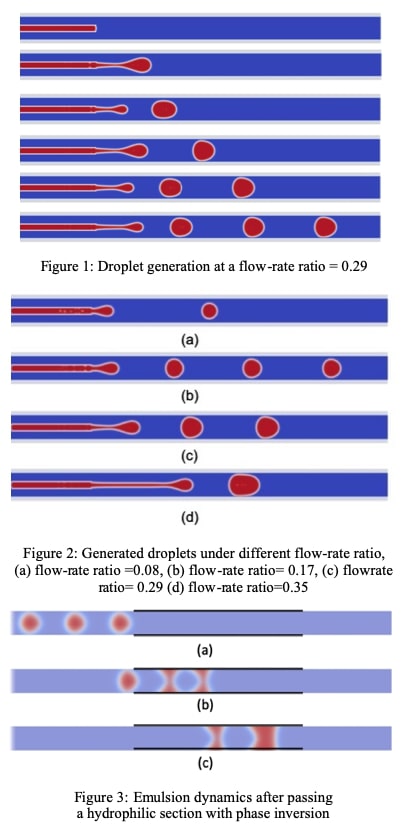(313c) Numerical Study on Emulsion Stability in Microfluidics with Heterogeneous Surface Wettability
AIChE Annual Meeting
2020
2020 Virtual AIChE Annual Meeting
North American Mixing Forum
Mixing in Gas-Liquid and Liquid-Liquid Multiphase Systems
Thursday, November 19, 2020 - 8:30am to 8:45am
We apply a diffuse-interface lattice Boltzmann method (LBM) to perform three-dimensional numerical simulations of liquid-liquid co-flow. The liquids are of equal density and viscosity. We first study the droplet generation process in a co-flow microfluidic capillary with the uniform wettability. Fig. 1 shows the detailed process of the droplet generation at a flow-rate ratio of 0.29, where the flow-rate ratio is defined as the ratio of the dispersed phase to the continuous phase flow rate. A series of tests are performed, and the corresponding flow patterns are shown in Fig 2. By altering the flow ratio, we observe the generation of monodispersed droplets with the size-dependent on the flow-rate ratio. Consistent with recent experimental results, we observe both squeezing and dripping modes of the drop generation for the capillary number in the range between 4×10-3 and 8×10-2 . We subsequently perform the simulations of monodispersed droplets under heterogeneous wettability. Figure 3 shows the emulsion dynamics after passing a hydrophilic section (where the black bold lines are). Phase inversion takes place, meaning that the monodispersed droplets generated are observed to pass the region, then experience a change in the morphology, size, and velocity due to its interaction with the surface. The results show that under a specific flow rate a phase inversion can happen, and the continuous phase becomes dispersed.
Our future work includes the studies of (i) extending the system to large density and viscosity ratios, (ii) quantitative analysis of the critical flow rates controlling the emulsion dynamics and stability under heterogeneous surface wettability, and (iii) the effect of an additive surfactant on the emulsion stability.
